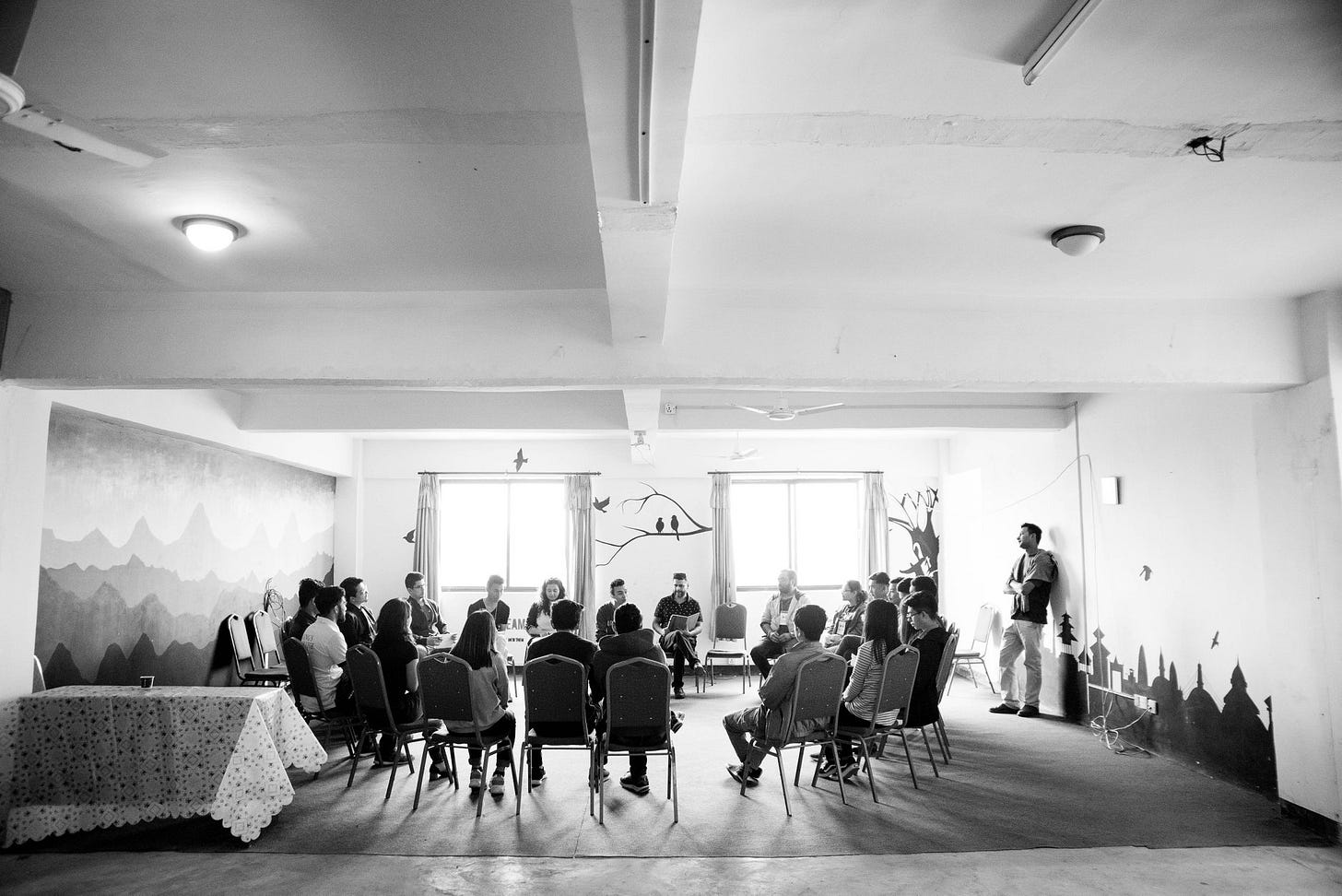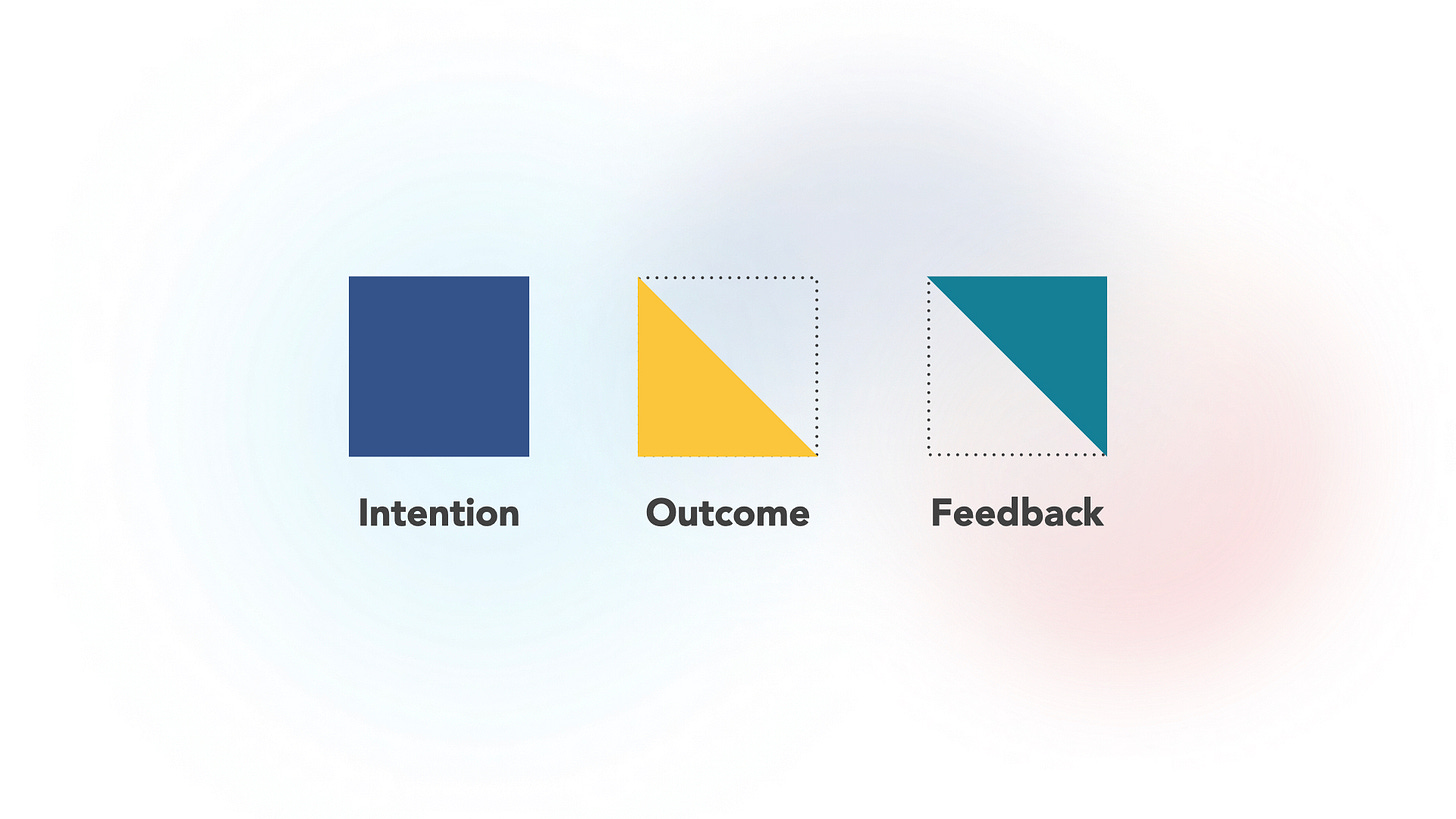Quick notes on giving feedback
A follow up on the last post on feedback. This time, written from the perspective of giving feedback. Read the first one here -raunakcha.substack.com/p/becoming-a-pro-feedback-receiver
A couple of weeks ago, I wrote about taking feedback - on which one reader wrote to me saying that the writing was unexciting compared to some of my other posts from the past. Touché.
So, here’s another post - again, on feedback. This time, from the perspective of the giver of feedback.
In writing this, I look back at the sessions I’ve facilitated (and co-facilitated). We generally end most sessions with a dedicated time focused on feedback. Perhaps it is the intensity of these feedback activities combined with the high of having survived two months with us, but, feedback happens to be something a lot of participants look back as a highlight of our sessions. Here are certain things I like to keep in mind as a facilitator when giving feedback on the efforts of my students.
Do I know my shit?
If I don’t know much about graphic design, I could probably just say “that poster you did looks really messy”, or “it looks like a child’s art project”. But with some domain knowledge (and experience) I can more accurately identify what it is that’s making it look messy - perhaps a lack of white space, too many typefaces, misaligned design elements. Better yet, with domain expertise, I would know exactly what needs to be done to improve the poster.
There’s a line between useful feedback and poorly formed opinions. The depth of knowledge of what you’re talking about is that difference. “Feedback” that Is based on a poor foundation of domain knowledge will generally become vague.
Take this video featuring Jacob Collier. Exactly one minute into the video, he plays around with the tune of “Hey Jude” - making it sound very different to the original. He does this by using his depth of understanding of music theory - and while doing so, helps us understand an otherwise complex idea.
The same goes for feedback. Knowledge and understanding of what you’re talking about gives you the ability to simplify, be precise and to make your thoughts concrete. Concrete, simple and precise ideas in turn, are easier to bring into action for someone trying to improve what they are doing. Remember, the goal is to help someone do better the next time they do it.
But what if you don’t have a deep understanding of what you’re talking about? What if you’ve got a lot of learning to do yourself? I find the best thing to do is really to not be a know it all jackass and just point them towards someone that has better knowledge. They get more useful insights and you look less like an idiot.
Intention vs outcome
I used to think in my early teaching days that feedback should focus on the outcome - as it is the most visible part of anything anyone does. Constructive feedback is warranted when intentions of an action are mismatched with their outcomes. Addressing the just the outcome of an action however, is only half way to a useful feedback. I now find it is helpful to also acknowledge the intention of an action.
I find it reduces the chances of the feedback triggering an emotional response1 - since I’m letting the listener know that I see what they were trying to do. But much more important by comparison is that it acts as a way to highlight where a mismatch between intention and outcome happened. Say you’re looking for a poster for a horror movie. Maybe the graphic designer made a great looking poster. But, it might have ended up looking more like a poster for a superhero movie.
Other times, it might be helpful to use feedback to better align actions with the bigger goal by focusing feedback on the intention itself. This would be feedback that highlights the bigger “whys” - in a way “refining” the intentions of someone’s actions to fit better into the big picture.
If you’re teaching or are in some way responsible for the learning and growth of someone, I’d like to know what it is you do to make your feedback effective. Drop me a message on one of my social media handles accessible here - substack.com/@raunakcha.
Refer Douglas Stone’s “Thanks for the Feedback”, or Google “truth triggers in feedback” for a quick read.






Hello Raunak, thanks for your interesting blog and especially about this article. When I was reading it, I started to think also how important it would be for both giver and receiver to understand why feedback is given, what is the purpose of it. Just thinking that if they have really different expectations, the feedback could be for nothing, because both of them might be confused or missing the point of the feedback. Like you are writing here about graphic design. Personally I have no competence of giving feedback about that, but Im quite good at giving feedback e.g. about presenting. But someone who have had earlier only feedback about graphic design, might become really frustrated with my feedback because of their previous experiences if we do not discuss first together about the purpose of that specific feedback. Im not sure if I can write my idea clearly enough, but Im sure you got it <3